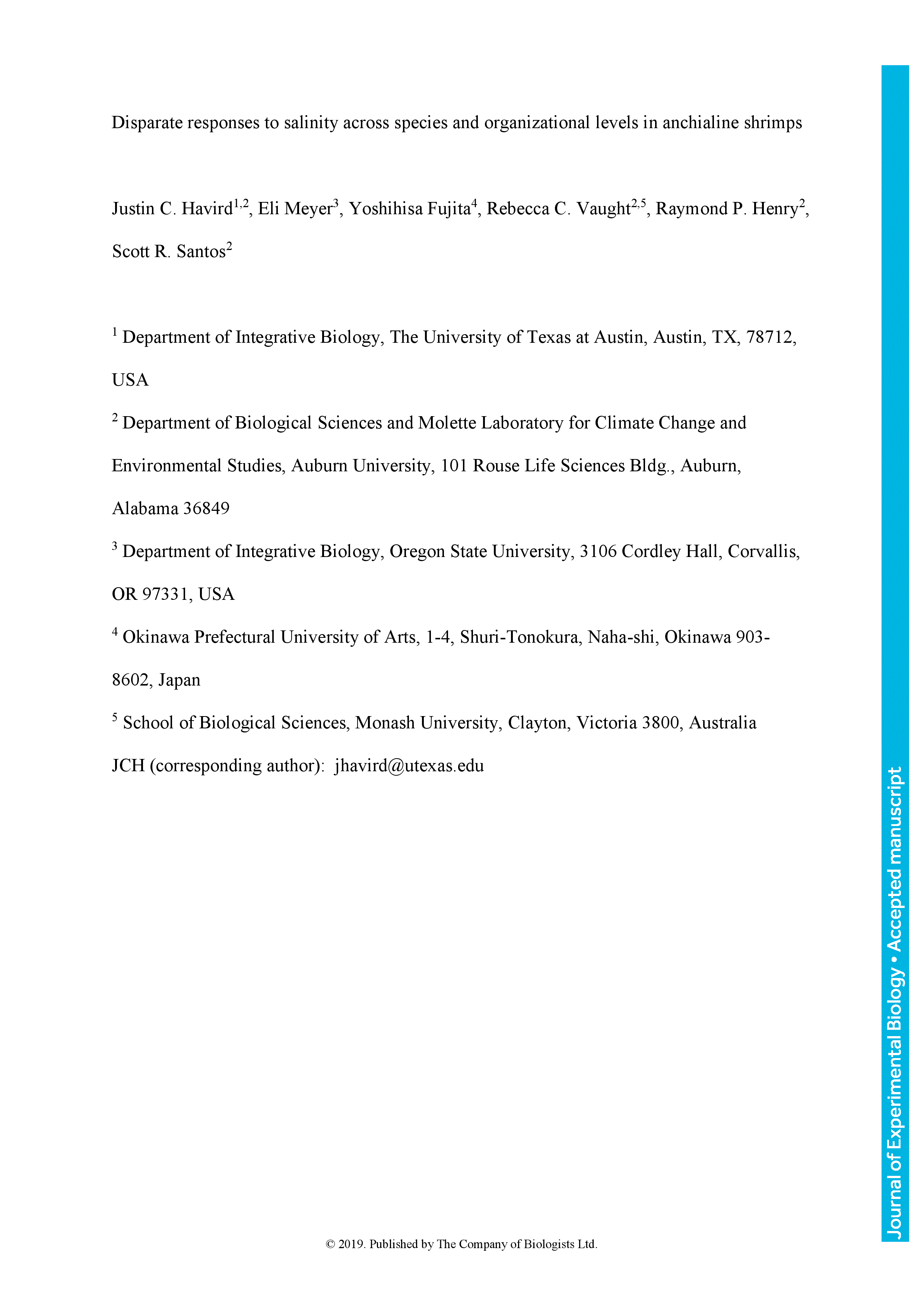Environmentally-induced plasticity in gene expression is one of the underlying mechanisms of adaptation to habitats with variable environments. For example, euryhaline crustaceans show predictable changes in the expression of ion-transporter genes during salinity transfers, although studies have typically been limited to specific genes, taxa, and ecosystems of interest. Here, we investigated responses to salinity change at multiple organizational levels in five species of shrimps representing at least three independent invasions of the anchialine ecosystem, defined as habitats with marine and freshwater influences with spatial and temporal fluctuations in salinity. Although all five species were generally strong osmoregulators, salinity-induced changes in gill physiology and gene expression were highly species-specific. While some species exhibited patterns similar to previously studied euryhaline crustaceans, instances of distinct and atypical patterns were recovered from closely related species. Species-specific patterns were found when examining: 1) numbers and identities of differentially expressed genes, 2) salinity-induced expression of genes predicted a priori to play a role in osmoregulation, and 3) salinity-induced expression of orthologs shared among all species. Notably, ion transport genes were unchanged in the atyid Halocaridina rubra while ones normally associated with vision and light perception were among those most highly upregulated. Potential reasons for species-specific patterns are discussed, including variation among anchialine habitats in salinity regimes and divergent evolution in anchialine taxa. Underexplored mechanisms of osmoregulation in crustaceans revealed here by the application of transcriptomic approaches to ecologically and taxonomically understudied systems are also explored.
Disparate responses to salinity across species and organizational levels in anchialine shrimps
Currently Viewing Accepted Manuscript - Newer Version Available
- Split-screen
- Views Icon Views
- Open the PDF for in another window
-
Article Versions Icon
Versions
- Version of Record 12 December 2019
- Accepted Manuscript 01 January 2019
- Share Icon Share
-
Tools Icon
Tools
- Search Site
Justin C. Havird, Eli Meyer, Yoshihisa Fujita, Rebecca C. Vaught, Raymond P. Henry, Scott R. Santos; Disparate responses to salinity across species and organizational levels in anchialine shrimps. J Exp Biol 2019; jeb.211920. doi: https://doi.org/10.1242/jeb.211920
Download citation file:
Advertisement
2023 JEB Outstanding Paper Prize shortlist and winner

The JEB Editors are delighted to announce the shortlisted authors for the 2023 JEB Outstanding Paper Prize. Read the winning paper - Tiny spies: mosquito antennae are sensitive sensors for eavesdropping on frog calls - by Hoover Pantoja-Sanchez and Brian Leavell from Ximena Bernal's lab at Purdue University, USA.
JEB Science Communication Workshop for ECRs

If you’re an early-career researcher interested in science communication and are attending the SEB Annual Conference in Prague this summer, come a day early and join the JEB Editors at a sci comm workshop to learn the key writing skills needed to promote your research to a broad audience beyond your peers (1 July at 14.30-17.30). Places are limited to 24 attendees, and applicants should apply through the SEB registration page by 30 April 2024.
Bridging the gap between controlled conditions and natural habitats in understanding behaviour

Novel technologies enable behavioural experiments with non-model species, in naturalistic habitats and with underexplored behaviours. In their Commentary, Scholz and colleagues discuss how to obtain a deeper understanding of the natural ecology and lifestyle of study animals.
Beluga metabolic measures could help save species

To help save animals from extinction, it’s important to understand what each species needs to survive. This led Jason John et al. to measure the metabolic rates of captive belugas to develop a ‘fish calculator’ showing that the whales need to eat ~23 salmon per day.
ECR Workshop on Positive Peer Review

Are you an ECR looking for tips on how to write concise, astute and useful manuscript reviews? If so, join the JEB Editors at a 2-hour JEB-sponsored Workshop on Positive Peer Review at the Canadian Society of Zoologists annual meeting in Moncton on 9 May 2024 at 13.00-15.00. There are 25 spaces for ECRs and selection is first come, first serve. To sign up, check the ECR Workshop box when you register for the CSZ meeting.



